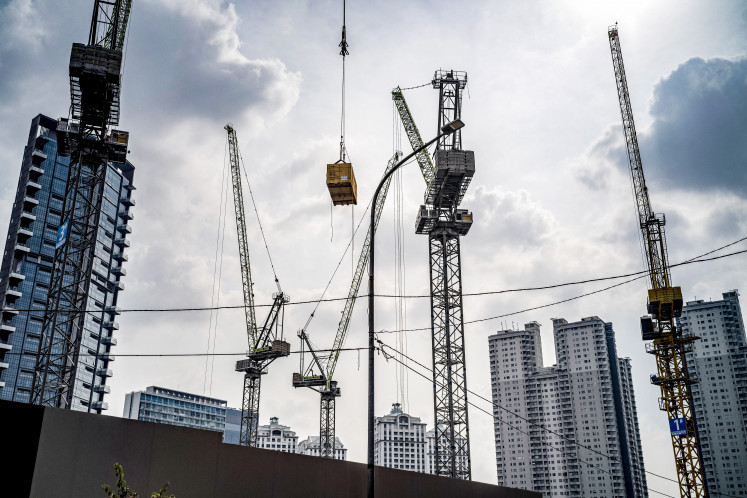Bali records highest population growth in 50 years
The period between 2000 and 2010 saw Bali record its highest population growth rate in the last 50 years, with the resort island’s population growing by 2
Change text size
Gift Premium Articles
to Anyone

T
he period between 2000 and 2010 saw Bali record its highest population growth rate in the last 50 years, with the resort island’s population growing by 2.15 percent from 3.15 million to 3.89 million, statistics showed.
The growth rate during the previous four decades never exceeded 2 percent. Between 1961 and 1971, there was a 1.75 percent increase, while between 1971 and 1980 it increased by 1.69 percent. During the period 1980-1990, growth slowed to 1.18 percent, and during the following decade, from 1990 to 2000, it grew by 1.26 percent.
Over the five decades, population growth reached 118.5 percent, from only 1.78 million people in 1961 to 3.89 million people in 2010.
“In the latest decade, 2000-2010, population growth reached its peak, while during the 1980-1990 period recorded the slowest growth, which may have been due to the intensive family planning program,” said I Gde Suarsa, head of the provincial statistics agency.
The total population in Bali is relatively low when compared to other provinces on Java, for instance, or West Nusa Tenggara and East Nusa Tenggara, he said.
“However, in terms of the population growth, Bali ranked second in the country as the province with the highest growth rate, after Banten province, which recorded an increase of 2.7 percent between 2000 and 2010.”
In terms of population density, Bali has yet to become as densely populated as provinces on Java.
“But Bali is the most densely populated province outside Java, as evidenced by population density, which is five times greater than the average across all the provinces in Indonesia,” Suarsa added.
With the island’s total area of 5,636.66 square kilometers, which accounts for only 0.29 percent of the total area of Indonesia, population density in Bali reached 673 people per square kilometer, while the national average is only 124 people per square kilometer.
The high population growth rate in Bali is not only due to birth rates, but also a high rate of migration onto the island, Suarsa said, adding that migrants accounted for 10 percent of the island’s total population.
Most of the migrants gravitate to the south of Bali, primarily Denpasar and Badung, causing an unequal distribution of population density across the island.
“Significant population growth can be seen in Denpasar and Badung, particularly in the central, southern and northern parts of Kuta,” Suarsa said.
The migrants targeted Denpasar and Badung because the two areas offered a variety of job opportunities. In Badung, for instance, there are many hotel and restaurant construction projects taking place.
“The projects require a large number of workers; hence, many people settled in the area to make a living,” Suarsa said.
Denpasar has also been a prime target for migrants as it is the center of education and governance. Besides seeking livelihoods, people migrate to the capital city to study at university.
In response to the high population growth in Bali, Governor Made Mangku Pastika reiterated the importance of improving the quality of Bali’s own human resources, so that they would be better able to compete with the migrants.
“There are an increasing number of people coming to Bali; all of them need jobs, need places to live, and need transportation. We have to improve the quality of our human resources in Bali to be able to face the competition,” he said.
The flood of migrants to the island, however, is unavoidable, due to its fast-developing economy, which attracts people to seek better lives.









